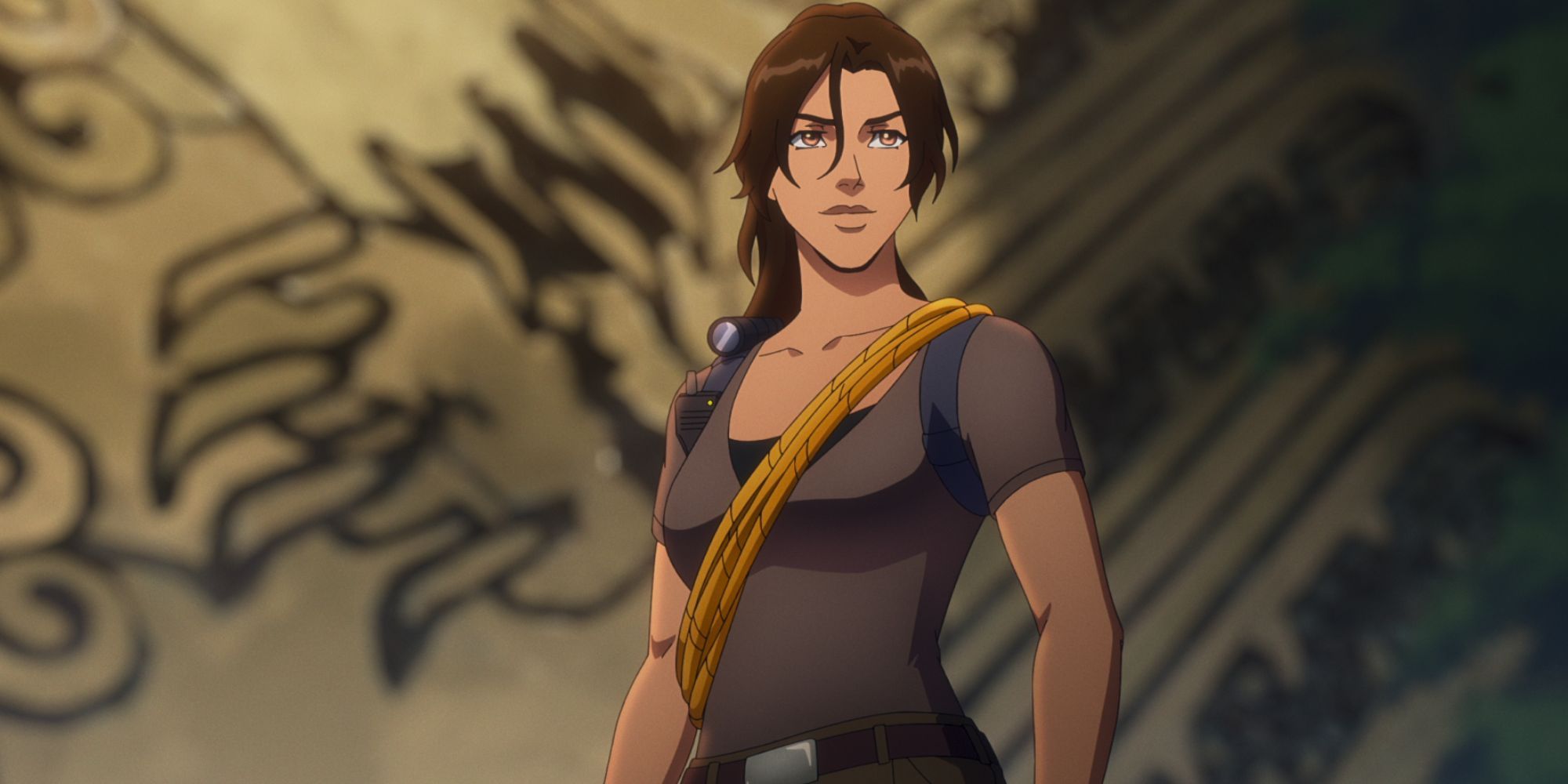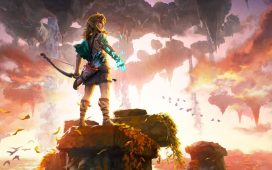Key Takeaways
- The Tomb Raider Netflix series uses animation to continue the story of Lara Croft.
- An increasing trend sees video game adaptations moving towards animated series for success.
- Animation is favored for video game adaptations for cost-effectiveness and narrative exploration.
Netflix’s Tomb Raider: The Legend of Lara Croft is now streaming and adheres to a popular trend with video game adaptations nowadays. The TV series continues the story of Crystal Dynamics’ Tomb Raider games, but unlike other Tomb Raider adaptations, it isn’t in live-action.
Tomb Raider: The Legend of Lara Croft takes place after the events of the Survivor trilogy of games (Tomb Raider, Rise of the Tomb Raider, Shadow of the Tomb Raider). It stars Hayley Atwell as the voice of the iconic action hero, Lara Croft, who embarks on a globetrotting adventure after an artifact is stolen from Croft Manor. The series comes from creator Tasha Huo, who also worked on The Witcher prequel series Blood Origin. Notably, Tomb Raider: The Legend of Lara Croft doesn’t try and retread the path of old Tomb Raider movies, instead, for the franchise’s television debut, it uses the format of animation.

Related
Tomb Raider: The Legend of Lara Croft Review
Tomb Raider: The Legend of Lara Croft earns its place as a worthy animated expansion of the popular franchise.
Tomb Raider Jumps on the Animation Trend
|
Stars |
Hayley Atwell, Richard Armitage, Earl Baylon, Allen Maldonado |
|
Creator/Showrunner |
Tasha Huo |
|
Animation Studio |
Powerhouse Animation Studios |
|
Release date |
October 10, 2024 |
|
Number of episodes |
8 |
|
Streaming on |
Netflix |
Tomb Raider: The Legend of Lara Croft is depicted in an anime style with animation done by Powerhouse Animation Studios. The studio previously worked on titles like Masters of the Universe: Revelation and this gives the Tomb Raider series a vibrant 90s cartoon look and feel. Powerhouse Animation also worked on another video game adaptation in the same style, Castlevania, which adds to a growing trend in the industry right now that sees video games adapted into animated series.
Looking at the video game adaptations that have occurred over recent years, quite a number of them have gone the animation route. CD Projekt Red’s Cyberpunk 2077 got an anime series on Netflix titled Cyberpunk: Edgerunners, which landed a perfect Rotten Tomatoes score. The studio also confirmed another adaptation of Cyberpunk 2077 is in the works with Netflix, also in an animated style. Netflix is also responsible for other animated video game adaptations, such as the aforementioned Castlevania series, Dota: Dragon’s Blood, Arcane: League of Legends, and Dragon Age: Absolution.
This trend is also one that is not slowing down. Netflix has already confirmed an animated adaptation of Devil May Cry is in the works and an animated series titled Splinter Cell: Deathwatch with Liev Schreiber will soon be released by the streamer. Additionally, there are plans to adapt Xbox’s Gears of War franchise into an adult animated series.
Why Are So Many Video Game Adaptations Turning to Animation?
As video game adaptations become more popular in Hollywood, animation is frequently becoming the go-to genre to adapt these franchises. The reasoning is pretty clear, they’re consistently successful. Most animated video game adaptations have scored over 90% with critics on Rotten Tomatoes, but they also are often well-received by fans of these franchises. In a world that has seen so many failed video game adaptations, that’s a winning formula.
There’s also the fact that animation is much cheaper to commission than a live-action series, particularly for some of the video game franchises that demand fantastical worlds or massive action set pieces. Take Tomb Raider, for example. The 2018 film starring Alicia Vikander cost almost $100 million to make and barely broke even at the box office. In contrast, Tomb Raider: The Legend of Lara Croft was able to venture to multiple different countries in one season, engage in many high-stakes action sequences over a vast array of biomes, and create a visually interesting representation of fantasy elements that would otherwise take hundreds of hours to do in CGI. To achieve this in live-action, while possible, would quickly skyrocket the budget, but the Netflix series manages to do it just as efficiently and cost-effectively in animation.
Video games and animation also share an inherent foundation. Video games have long been a place where creatives can push the boundaries of different animation styles. Some games aim to simulate reality, like The Last of Us or Detroit: Become Human, while others embrace the creative freedom animation can provide, like Cuphead, The Plucky Squire, or Spiritfarer. Translating these types of games into an animated series or movie is far more natural than trying to force them into live-action. It can be done, of course, but with varying results; take fans’ reactions to Sonic the Hedgehog or the upcoming Minecraft movie, for instance.
There also seems to be a trend of video game adaptations choosing the animated series format over animated movies. While some adaptations, like the Super Mario Bros. Movie, have seen great success in the film format, an episodic format seems to work better for larger open-world game adaptations. Franchises like Cyberpunk 2077 or Dragon Age are set in large expansive worlds with lots of different characters and lore to explore. Spreading this out over 8–10 episodes allows the creators to adapt the story of these franchises far more faithfully than trying to squeeze it all into a 2-hour movie.
Tomb Raider has typically been a narrative-driven action-adventure game, so it does work in the feature film format. But the Netflix series has proven that Lara Croft’s story also works equally well when given time to breathe over multiple episodes and that it can be portrayed just as faithfully in an anime style.
Tomb Raider: The Legend of Lara Croft is now streaming on Netflix.

More
Should Video Game Adaptations Always Be Animated?
Video game adaptations are one of the toughest kinds of movies to make, so is animation the way to go?











